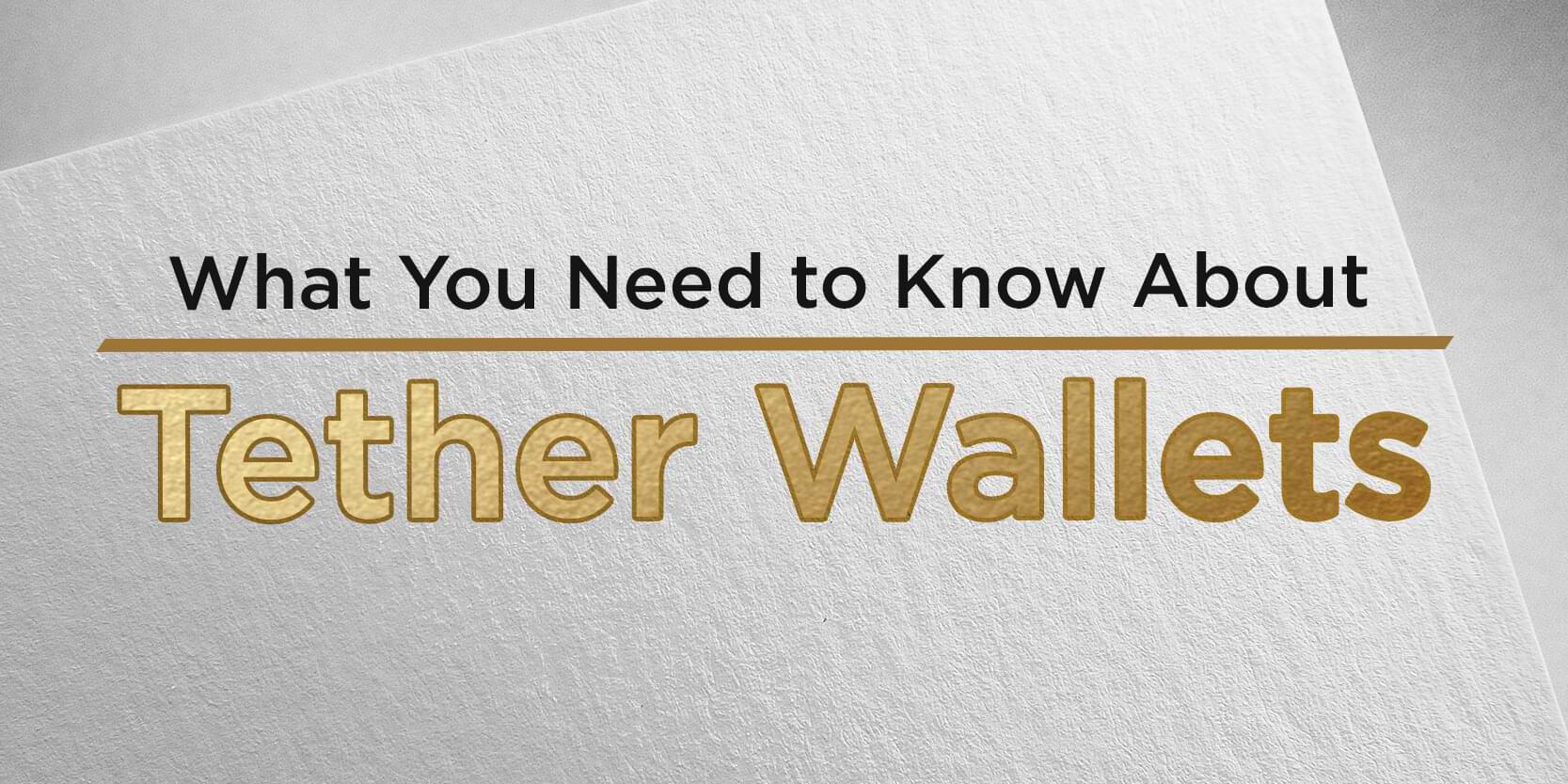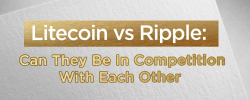
What You Need to Know About Tether Wallets
Stablecoins are a unique type of cryptocurrency as they’re not affected by Bitcoin (BTC) and altcoin prices. Its most popular derivatives are Tether tokens, which are also known by its exchange name, USDT. One tether coin is pegged to one US dollar or its equivalent in other assets. This exchange essentially makes USDT a form of usable digital currency.
Every form of digital currency has to be stored somewhere. For Tether and other stablecoins, that storage space is called a tether wallet. There are plenty of options on the market, plus three different kinds to choose from. Here’s everything you need to know about them.
Tether (USDT)
Tether (USDT) is a form of stablecoin, which is a cryptocurrency like no other. Unlike BTC and popular altcoins, such as Ethereum (ETH), UDST isn’t mined or earned. It also isn’t a pre-mined currency, so it has no maximum cap. The number of Tether tokens in circulation can range from 10 billion to over 30 billion at any given time. USDT is “generated” by trading 1 US dollar or another currency equivalent. It means that each Tether token is pegged to the value of 1 US dollar. You can exchange through a tether wallet or any popular coin market, which has various kinds of Tether up for trade.
Tether doesn’t follow the standard cryptocurrency rules. So you may wonder what they’re used for. Investors and traders are attracted to this asset, mainly for liquidity. In other words, they use USDT as a way to exchange cryptocurrency without a massive price change. For instance, an investor may want to exchange some BTC for fiat money–also known as “physical” currency. The process is safer and more secure when the coin is first exchanged for USDT. In turn, they can choose to hold or exchange these tokens for US dollars (or their equivalent in other currencies).
In short, Tether is essentially a digital dollar. That digital connection is valuable because only stablecoins can make it happen. Tether is 100% backed by reserves. These reserves can be traditional currency, assets, or cash equivalents. They may also be loans, receivables, and affiliated entities. But one thing’s for sure–each dollar you put into USDT comes back to you still as a dollar. It doesn’t change regardless of how the market moves. It means that if you put 200 USD into USDT, you get 200 tokens in return.
Once you exchange tokens for fiat money, they get removed from circulation. Despite this factor, USDT sees over 50 billion in trading volume per day. Its market cap is over 20 billion, and there’s currently over 14 billion in circulation. Because there’s no loss in holding or exchanging Tether, there’s no risk in holding onto it or exchanging it for fiat money.
Another notable characteristic of Tether is that it can exist in various blockchains. The two most popular options are Bitcoin’s Omni layer and ERC-20. Some investors prefer the former to maximize immutability and safety. Meanwhile, others prefer ERC-20 because it uses UDST to earn passive income. Regardless, both are doing well and are good options, depending on your preferences.
What is a Tether Wallet?
As its name suggests, a tether wallet is a place where you can store USDT assets and other stablecoins. Each tether wallet supports different stablecoins. So it’s best to look into each wallet’s website for a full list of compatible assets. There are three basic functions in any tether wallet: it allows you to store, receive, and send stablecoins to other wallet addresses. Think of it as a cryptocurrency wallet, but specifically for Tether. More robust platforms also offer higher-level functions. These include withdrawing USDT to your bank card and exchanging it for other cryptocurrencies.

Types of Tether Wallets
There are three main types of tether wallets. It’s important to understand each type and choose one that fits your preferences.
- Hot wallets. These are wallets that are connected to the internet. They allow you to store USDT and access related services on a desktop or mobile device. A huge upside to hot wallets is that you can access a wide range of services. Usually, all the higher-level functions are available due to the flexibility of online platforms. Because you can only access them online, there’s no way to access your wallet without internet connectivity. But as long as you don’t see constant WiFi or data outages in your area, choosing a hot wallet shouldn’t be a massive issue. One drawback is that hot wallets tend to be prone to cyber-attacks. It’s a huge issue that should influence your decision to choose (or not to choose) a hot wallet.
- Cold wallets. These are ultra-secure wallets in the form of hardware. They’re commonly sold as Bluetooth-enabled devices that look like a USB. A certified, secure chip will keep all your private keys and personal information safe. As you can’t access cold wallets online, there’s no threat of any cyber-related issues. But a huge drawback is that the functions you can access are limited. You can only enjoy one service: storage. Even sending and receiving stablecoins is impossible as cold wallets are completely offline. And if you lose the hardware, you lose your assets as well.
- Warm wallets. These are a hybrid between hot and cold wallets. They’re an ideal choice because you can access all services online, but without having to worry about cyber attacks. This is made possible as most funds are stored in cold storage. The company that runs the tether wallet is responsible for keeping the funds safe. Thus, you don’t have to worry about losing personal hardware.
Factors to Consider When Choosing a Tether Wallet
There are plenty of tether wallets available on the market. The best way to sift through them is to consider key must-have features. This method will help you narrow down the list with top choices that fit your criteria.
- Ease of use. There’s no doubt that any new hardware or software can be a little challenging to ease into. Some tether wallets have a complicated user interface to navigate, which can take time to learn. They aren’t good choices if you aren’t tech-savvy or prefer a minimalistic software experience. So it’s a good idea to look through photos of the wallet’s interface to determine whether it’s simple enough to use. If you’re going for a hot or warm wallet, look into desktop and mobile support as well. It’s convenient to have a wallet that can be accessed from any device–so keep that into consideration when choosing.
- Top-notch security. You want to choose a tether wallet with the best security, as it carries the equivalent of actual fiat money. It’s a good idea to stay away from hot wallets, which are prone to cyber-attacks. But even cold and warm wallets need to be scrutinized to ensure that you don’t compromise your tokens’ safety. Choose a wallet with a good track record and reputable partners. Additionally, look for key features such as two-factor authentication for an added layer of security.
- Customer support. There’s no telling when you decide to go on your tether wallet and conduct an exchange. Likewise, issues can come up at any time of the day or night. It’s a burden not to have customer support ready to answer your calls whenever you require help. Thus, you should choose a wallet with 24/7 customer service. They’ll be able to troubleshoot your software or hardware problems any time, so you don’t miss any good trading opportunities.
- High-level services. Most tether wallets offer basic functions. But some gems offer more services, many of which are quality of life improvements. For example, some tether wallets may allow you to transfer USDT to your debit account directly. Others may allow you to exchange USDT for other coins, such as Bitcoin (BTC) and Litecoin (LTC). There are also options that allow you to earn interest. The bigger the scope of the tether wallet, the less software you need to use to supplement the experience. It’s a wonderful way to simplify your USDT ownership journey. Thus, if you can, choose the most robust wallet on the market.
Tether is a wonderful asset that compliments the cryptocurrency landscape. There are plenty of tether wallets that can store USDT and other stablecoins. It’s best to choose one that suits your lifestyle and preferences for the best possible experience.





Leave a Reply
1 comments
Add comment ×